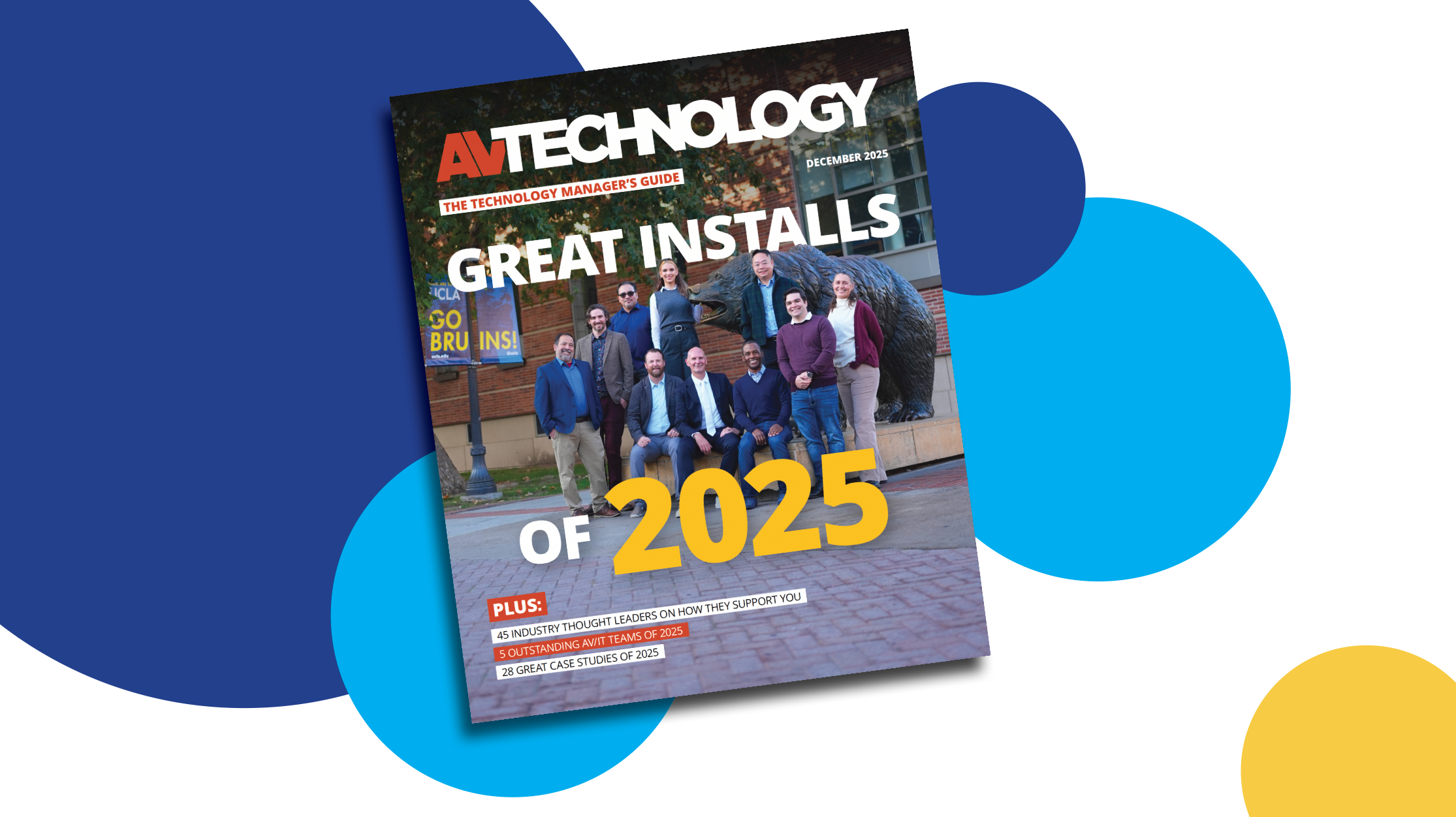On Higher Ed Tech: Listen Technologies
Sam Nord, Vice President of Global Sales at Listen Technologies shares insight into designing the higher ed classroom for today and the future. Part of AV Technology's Thought Leader Series.


AVT Question: Please share insight and best practices for designing the higher ed classroom for today and the future.
Thought Leader: Sam Nord, Vice President of Global Sales at Listen Technologies
Adaptability and flexibility are crucial features of any AV system in higher education classrooms. AV/IT managers planning classrooms for now and the future should design inclusive learning spaces that implement nimble technologies to meet end users’ unique needs. Assistive listening systems that are portable, easy to use, unobtrusive, and multifunctional benefit all students.
Assistive listening systems help people hear clearly, whether they have chronic hearing loss or find it challenging to hear in certain situations, such as when they are far away from speakers, in a room with poor acoustics, or unfamiliar with the language. Assistive listening systems also block out distracting audio and background noise so students can focus exclusively on the instructor’s voice.
The more AV/IT managers can reduce barriers to inclusion and ensure accessibility for all students and educators in higher education classrooms, the better." —Sam Nord, Vice President of Global Sales at Listen Technologies
There are different types of assistive listening systems; however, the best system is the one that students will use to make their experience in the classroom more inclusive and engaging. Audio-over-Wi-Fi assistive listening systems are very popular in higher education environments, and we expect this trend to continue as the pervasiveness of smartphones grows. With audio-over-Wi-Fi systems, students stream clear audio directly to their smartphones and listen with earbuds or headphones. Audio also can stream from their smartphones to Bluetooth-enabled hearing aids and cochlear implants. Unless they borrow a dedicated Wi-Fi receiver, there is no equipment to check out and nothing to indicate to others they are using assistive listening technology—just a seamless, inclusive listening experience that supports learning and engagement.
The more AV/IT managers can reduce barriers to inclusion and ensure accessibility for all students and educators in higher education classrooms, the better.
A daily selection of features, industry news, and analysis for tech managers. Sign up below.

Cindy Davis is the brand and content director of AV Technology (AVT). She was a critical member of the AVT editorial team when the title won the “Best Media Brand” laurel in the 2018 SIIA Jesse H. Neal Awards. Davis moderates several monthly AV/IT roundtables and enjoys facilitating and engaging in deeper conversations about the complex topics shaping the ever-evolving AV/IT industry. She explores the ethos of collaboration, hybrid workplaces, experiential spaces, and artificial intelligence to share with readers. Previously, she developed the TechDecisions brand of content sites for EH Publishing, named one of the “10 Great Business Media Websites” by B2B Media Business magazine. For more than 25 years, Davis has developed and delivered multiplatform content for AV/IT B2B and consumer electronics B2C publications, associations, and companies. A lifelong New Englander, Davis makes time for coastal hikes with her husband, Gary, and their Vizsla rescue, Dixie, sailing on one of Gloucester’s great schooners and sampling local IPAs. Connect with her on LinkedIn.
